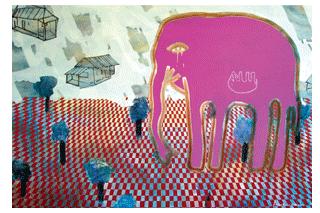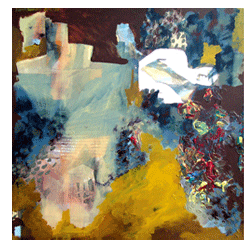- Prelude
- Editorial
- ...Where ever I stumble, let painting lie before me....
- ...Colour guides in its own direction...
- Abstract Art: Popular Myths and History
- Abstract Rhetoric:
- Ram Kumar: A transition from figurative to abstract
- I walk the line
- Exploring a twilight zone
- Articulating the Abstract voice from Madhya Pradesh
- Perception of Abstract in forms
- Confronting Cultures: The Dialectic of Abstraction in Bengal Art
- K.C.S. Paniker and his Words and Symbols
- Dialectics of Abstract Art and Its Indigenous Identity
- Between Ambivalence and Criticism: Why Abstraction?
- Notations and Rhythm in Space: Sushen Ghosh
- Victorian Era: Eclectic Furniture
- Patek Philippe : an overview
- The “Theme Pandals” of Durga Pujo: An Unexplored Discourse
- Musings on Music
- Butterflies in the stomach… still
- Contemporary Art Market Report 2009-10
- Artist Index and Statistics
- Auction Reports
- Recent works of Pavan kumar D. - In the Journey of Learning things
- Narrating “with a pinch of salt” Paintings of K.P.Reji
- Reclaiming an artist of true calibre
- Musings from Chennai
- An Annual Homage..
- Art Events Kolkata: September-October 2010
- Mumbai Art Sighting
- Art Bengaluru
- Unveiling the next in line
- Preview
- In the News
- Sotheby’s : Important Watches Hong Kong
ART news & views
Recent works of Pavan kumar D. - In the Journey of Learning things
Volume: 3 Issue No: 10 Month: 11 Year: 2010
“There is beauty in space, and it is orderly, there is no weather and there is regularity. It is predictable... Everything in space obeys the laws of physics. If you know these laws and obey them, space will treat you kindly. And don't tell me man doesn't belong out there. Man belongs wherever he wants to go.” Wernher Von Braun.
Man belongs wherever he wants to go.” Wernher Von Braun.
Born in the year 1982 Pavan, graduated from MMK College of Visual Art, Gulbarga University with a BFA degree and went to Sir J.J School of Art, Mumbai University for his MFA.
A visit to his studio unveiled a whole new preparation by the artist living in Hyderabad.
Pavan's works reflect transmission of his responses to the burgeoning cityscape. His images express his discomfiture through metaphor and irony; In fact the intention to register incessant thoughts and their physical positioning correspond to a sense of ambiguity. This construes a sense of living the time; the narration stirred up by the elements within the image and the expressive modalities relating to them often come through as a dialogue between objectivity and chaotic subjectivism.
Pavan situates his works in the genus of semi - abstracts; an expressionistic approach too comes across strongly to reinforce immediacy of his thought. The feeling or meaning behind the work, the multiple layers of ruminations feed into the abstract in his works;  then again the use of prominent forms creates a momentary disengagement from the abstract and induces a possibility of finding what it is all about.
then again the use of prominent forms creates a momentary disengagement from the abstract and induces a possibility of finding what it is all about.
This deliberation in placing layers of personalised abstract expressions and defined forms by the artist, is to make happen an intimate transaction between the painting and the spectator.
The fact that Pavan draws substances from the reality of his experiences as a spontaneous response to things around him, both visual and felt, reflects a process that navigates the emotional as well as the organic. The intention of the artist to engage with this process perhaps reflects Tagore's notion of the need to be creative, as expressed in his essay “The Artist”, in which he argues that man's feeling for what is real to him must never die; it must find an imperishable form. He says, “We can make truth ours by actively modulating its interrelations”.
Pavan says that the creative process begins with putting the inveterate thought on the paper. The artist's images reflect his particular responses to his surroundings in the construction of branches, cut trees, leaves falling apart and wires emerging from within the soil instead of roots. All these prepare the viewer to see the structure of his thought relating to his particular experience, and not for the objective details of life.
It is interesting to reflect upon Charles Harrison's essay on Abstract expressionism “It is hard for us even now to see European abstract art in the disenchanted light by which some American artists viewed it, and still do. After all, many of our highest and dearest cultural and spiritual aspirations are invested in European notions of the meaningfulness of abstract art. But to the American artists concerned in the early forties, as the Europeans mostly were not,  with major problems of major art, Suprematism, Neoplasticism, Concrete art, absolute art , Puritanism, etc., if they did not actually accord with totalitarianism, certainly did not answer to the circumstances in which they were concerned to embody their apprehensions and affirmations. Even in Europe we may come to view the progenitors of our abstract art as primitives of a kind, men whose consciousness of the world was screened as a child's is, who were thus privileged to embody the aspirations of a dematerialized world, an unsophisticated awareness.”
with major problems of major art, Suprematism, Neoplasticism, Concrete art, absolute art , Puritanism, etc., if they did not actually accord with totalitarianism, certainly did not answer to the circumstances in which they were concerned to embody their apprehensions and affirmations. Even in Europe we may come to view the progenitors of our abstract art as primitives of a kind, men whose consciousness of the world was screened as a child's is, who were thus privileged to embody the aspirations of a dematerialized world, an unsophisticated awareness.”
The above quote shows that the contemplation of art has to do a lot the spectator and the reader, if we want to see the nature of relationship that exists between the language of the artist and its appropriated forms to define the context as established by the artist to gain eloquence.
This treatise intends to call for discussion some of the images from a larger body of his work, in the context of juxtaposing the language of expressionistic abstraction and the spirit of the thought in articulating Indian contemporanaeity. Most of the works in mixed media on paper are from his recent crop of 2010 - the image of the pot with green leaves, titled as These leaves do not need water, was born out of the notion of artificiality of things leading to a collapse of the need to nurture.  The artist essentialises the role of things made redundant wherein the cross reflects a mannerism towards elements that are unacceptable in the Journey of learning things.
The artist essentialises the role of things made redundant wherein the cross reflects a mannerism towards elements that are unacceptable in the Journey of learning things.
The mixed media work titled The Cup and the jug is suggestive of a waking up to a morning; making mistakes in perceiving and the experience of making instantaneous corrections are expressed in the sweeping yellow, the dark brown mountains and the carefree rendering of the alphabets respectively. In his works, objects that are imagined become apparent as spatial elements, and the aptitude for dealing with the juxtaposition of colours comes though as an integral compositional prerogative.
In the image titled Field, Jug and glasses, the sight of empty glasses in a tea stall next to a jug filled with water ushered in the context of life, the alphabets are actors of signifying a learning process and the graph depicts the registration of perfections and imperfections of performances. The artist at the initiation of the series was engaged in musing over the irony of using still-life prototypes in expressing the life in rigid urban spaces as opposed to natural growth, the field and the crop, highlighting how man has confined life. The elephant which cannot drink tea from a cup reflects the artist's preoccupation with artificiality and suffocation, problematising a composition with imaginary notions of objects and their relationship with the space that confines them.